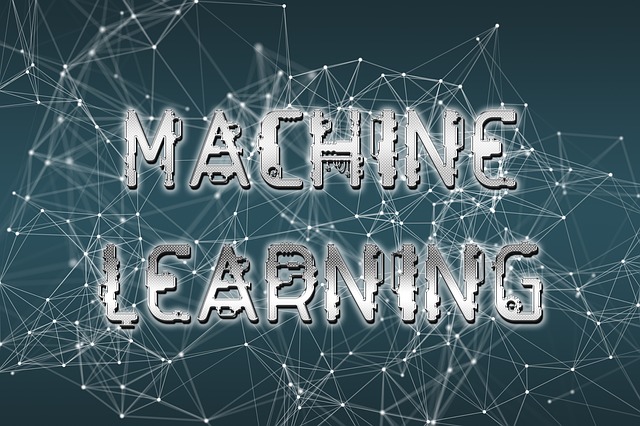Machine learning is a process that allows computers to learn without being explicitly programmed. This means that the computer can learn on its own by analyzing data and then making predictions or decisions based on what it has learned. Machine learning is used in various industries, including finance, healthcare, manufacturing, and retail. This blog post will discuss machine learning and how it works. Let’s get to the details.
What is Machine Learning?
Machine learning is an application of artificial intelligence (AI) that provides systems the ability to learn and improve from experience without being explicitly programmed automatically. Machine learning focuses on developing computer programs that can access data and use it to learn for themselves. For instance, a machine learning algorithm can be trained using the log linear model to identify the underlying relation between two data groups. This would allow the computer program to make better predictions and decisions, eventually improving accuracy and efficiency.
The process of machine learning is similar to that of data mining. Both processes look for patterns in large sets of data. However, machine learning algorithms use this data to make predictions and provide insights that wouldn’t have been previously possible.
How Does Machine Learning Work?
Machine learning works by utilizing algorithms to analyze data and then utilize the information to make decisions or predict future outcomes. These algorithms can continuously learn from the data provided, providing more accurate results over time.
The machine learning process can be divided into four stages: data collection, data preparation, algorithm training, and model evaluation.
- Data Collection: The first stage of the machine learning process involves collecting relevant data that will be used to train the algorithms. This could include historical customer data from a company’s database or publicly available data from an external source.
- Data Preparation: The second stage is to prepare the data to be used by the algorithms. This includes cleaning, normalizing, and formatting the data so its structure is consistent and uniform. It also involves selecting which features of the data will be most useful for training the algorithms.
- Algorithm Training: The third stage of machine learning is to train the algorithms using the prepared data. This could include supervised or unsupervised learning, depending on the type of problem being solved. For example, a supervised algorithm might be used for classification tasks, while an unsupervised algorithm might be used for clustering tasks.
- Model Evaluation: The final stage is to evaluate the algorithms’ performance and make necessary adjustments as needed. This could include testing the model on a test dataset or evaluating it against metrics such as accuracy or precision.
Different Types of Machine Learning?
There are several different types of machine learning algorithms, each with its own distinct characteristics. These include supervised, unsupervised, semi-supervised, and reinforcement learning.
- Supervised Learning: Supervised learning is when the algorithm is provided with a labeled dataset that has been prepared for it to learn from. This type of learning is used when the desired outcome is known, and the algorithm must learn to recognize patterns to predict it.
- Unsupervised Learning: Unsupervised learning is when a dataset is given without labels or any predetermined outcomes. The algorithm then needs to discover patterns and relationships within the data on its own, making predictions from what it has learned.
- Semi-Supervised Learning: Semi-supervised learning is a combination of supervised and unsupervised learning. It involves providing the algorithm with labeled and unlabeled data, allowing it to learn from both simultaneously.
- Reinforcement Learning: Reinforcement learning uses rewards and punishments to teach an algorithm how to behave in a certain situation. The algorithm is provided with a set of rules and receives feedback on its performance, which it can use to adjust its behavior accordingly.
Why is Machine Learning Important?
Machine learning is becoming increasingly important in the modern world, enabling us to process large amounts of data quickly and accurately. It can also be used to improve existing systems or processes, making them more efficient and effective.
In addition, machine learning algorithms can uncover hidden patterns and insights in data that would otherwise not be possible with traditional methods. This can help businesses make better decisions, improve customer satisfaction, and ultimately drive competitive advantage in their industry.
Ultimately, machine learning is helping to shape the future of technology and has already had a huge impact on many aspects of our lives. Machine learning algorithms are helping us create a more efficient and automated world, from self-driving cars to smarter search engines.
Machine learning is here to stay, and the possibilities for its applications are virtually endless. As technology evolves, so too will machine learning algorithms, helping us create a more efficient and intelligent future.
Main Uses of Machine Learning
There are various uses of machine learning, including the below:
- Image and Video Analysis: Machine learning algorithms can be used to identify objects, analyze movements, recognize faces, and more.
- Natural Language Processing (NLP): NLP uses machine learning algorithms to interpret natural language and understand what people say.
- Automation: Machine learning algorithms can be used to automate mundane tasks, such as data entry or scheduling.
- Recommendation Systems: Using machine learning algorithms, recommendation systems can suggest products and services to users based on their past behavior.
- Robotics: Machine learning algorithms can be used in robotics to help robots navigate and interact with their environment.
Machine learning is an important and rapidly evolving technology that is being used to make our lives easier and more efficient. It can be applied in many different areas, such as image and video analysis, natural language processing, automation, recommendation systems, and robotics. With the right data and algorithms, the possibilities are limitless.













